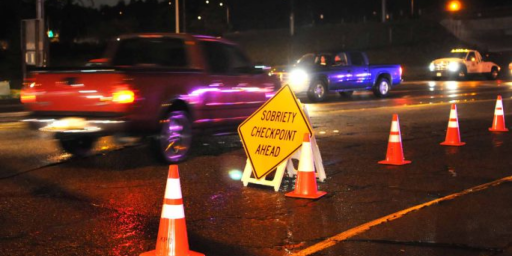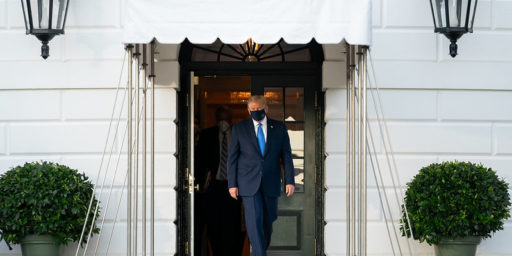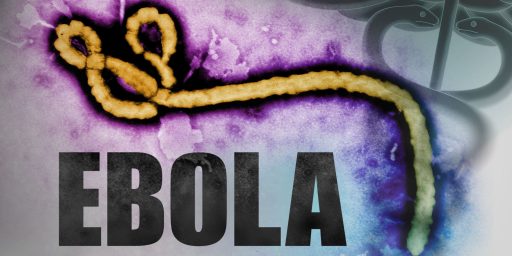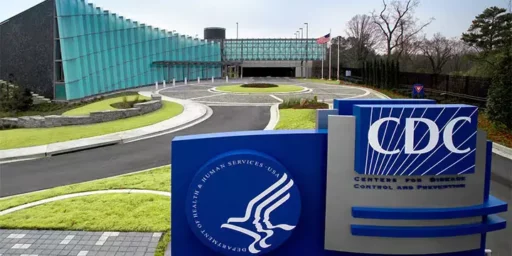US Regulations Slowed Coronavirus Testing
Why South Korea is so far ahead of us in fighting COVID-19.

South Korea and the United States both diagnosed their first case of COVID-19 on January 20. A Reuters special report explains “How Korea trounced the US in the race to test people for coronavirus.”
In late January, South Korean health officials summoned representatives from more than 20 medical companies from their lunar New Year celebrations to a conference room tucked inside Seoul’s busy train station.
One of the country’s top infectious disease officials delivered an urgent message: South Korea needed an effective test immediately to detect the novel coronavirus, then running rampant in China. He promised the companies swift regulatory approval.
Though there were only four known cases in South Korea at that point, “we were very nervous. We believed that it could develop into a pandemic,” one attendee, Lee Sang-won, an infectious diseases expert at the Korea Centers for Disease Control and Prevention, told Reuters.
“We acted like an army,” he said.
A week after the Jan. 27 meeting, South Korea’s CDC approved one company’s diagnostic test. Another company soon followed. By the end of February, South Korea was making headlines around the world for its drive-through screening centers and ability to test thousands of people daily.
Readers will have guessed already that the US reaction was a mite less urgent.
South Korea’s swift action stands in stark contrast to what has transpired in the United States. Seven weeks after the train station meeting, the Koreans have tested well over 290,000 people and identified over 8,000 infections. New cases are falling off: Ninety-three were reported Wednesday, down from a daily peak of 909 two weeks earlier.
The United States, whose first case was detected the same day as South Korea’s, is not even close to meeting demand for testing. About 60,000 tests have been run by public and private labs in a country of 330 million, federal officials said Tuesday.
As a result, U.S. officials don’t fully grasp how many Americans have been infected and where they are concentrated – crucial to containment efforts. While more than 7,000 U.S. cases had been identified as of Wednesday, as many as 96 million people could be infected in coming months, and 480,000 could die, according to a projection prepared for the American Hospital Association by Dr. James Lawler, an infectious disease expert at the University of Nebraska Medical Center.
“You cannot fight what you cannot see,” said Roger Klein, a former laboratory medical director at the Cleveland Clinic and previously an adviser to the U.S. Department of Health and Human Services on clinical laboratory issues.
Many of us have blamed President Trump for this lack of urgency and with good reason. Still, it’s not all on him.
South Korea has had recent experience with similar pandemics and is better geared both institutionally and culturally to deal with them.
How the United States fell so far behind South Korea, according to infectious disease experts, clinicians and state and local officials, is a tale of many contrasts in the two nations’ public health systems: a streamlined bureaucracy versus a congested one, bold versus cautious leadership, and a sense of urgency versus a reliance on protocol.
[…]
The administration of President Donald Trump was tripped up by government rules and conventions, former officials and public health experts say. Instead of drafting the private sector early on to develop tests, as South Korea did, U.S. health officials relied, as is customary, on test kits prepared by the U.S. Centers for Disease Control and Prevention, some of which proved faulty. Then, sticking to its time-consuming vetting procedures, the U.S. Food and Drug Administration didn’t approve tests other than the CDC’s until Feb. 29, more than five weeks after discussions with outside labs had begun.
Meanwhile, in the absence of enough kits, the CDC insisted for weeks on narrow criteria for testing, recommending it only when a person had recently been to China or other hot spots or had contact with someone known to be infected. As a result, the federal government failed to screen an untold number of Americans and missed opportunities to contain the spread, clinicians and public health experts say.
South Korea took a risk, releasing briskly vetted tests, then circling back later to spot check their effectiveness. By contrast, the United States’ FDA said it wanted to ensure, upfront, that the tests were accurate before they went out to millions of Americans.
“There are always opportunities to learn from situations like this one,” FDA Commissioner Stephen Hahn, who has been on the job only three months, told Reuters. “But one thing I will stand firm on: We cannot compromise on the quality of the tests because what would be worse than no tests at all is wildly inaccurate test results.”
There’s an old joke in medical research circles, attributed to a Dr. EE Peacock:
One day when I was a junior medical student, a very important Boston surgeon visited the school and delivered a great treatise on a large number of patients who had undergone successful operations for vascular reconstruction. At the end of a lecture, a young student at the back of the room timidly asked, “Do you have any controls?” Well, the great surgeon drew himself up to his full height, hit the desk, and said, “Do you mean did I not operate on half of the patients?” The hall grew very quiet then. The voice at the back of the room very hesitatingly replied, “Yes, that’s what I had in mind.” Then the visitor’s fist really came down as he thundered, “Of course not. That would have doomed half of them to their death.” G·d, it was quiet then, and one could scarcely hear the small voice ask, “Which half?”
We have hard-wired into our health regulations demand for rigorous testing of medical devices, procedures, and tests to ensure that they do more good than harm. As a general rule, I endorse that caution.
In the abstract, releasing a test for widespread use without proper vetting creates two risks. Too many false positives and people are unnecessarily quarantined. That’s expensive and traumatic but a risk we can afford to absorb. Too many false negatives, though, and we release infectious people back into the population to spread the contagion.
In the particular case, though, we were dealing not only with an emergency where time was of the essence but others had dealt with the crisis before us. There had already been widespread “testing” of the tests in China, Italy, and elsewhere. And by now we’re long past the point where we could simply have accepted South Korea’s test as valid.
President Trump made matters worse by spending weeks downplaying the crisis, seemingly because he feared it was politically damaging. And he was too slow to listen to expert advice. But the professionals here have also failed us by being overly cautious.






Ah, yes, blame “the regulations.”
In good times, those regulations serve us well. In desperate times, they can be a barrier. It is precisely that kind of thing that the White House pandemic response unit was created to deal with. Donald Trump, at John Bolton’s behest, disbanded that unit.
So yeah, it’s on him.
And that is where a competent President would have stepped in and conveyed a true sense of urgency, instead of minimizing the threat and equating it to the plain ol’ flu.
As Chris Hayes said when he tweeted the link to that article yesterday, a meeting like the one recounted in the lede could absolutely have happened here. America’s first COVID-19 case was confirmed the same day as South Korea’s. But we didn’t have that meeting, because the President was more concerned about the stock market than the millions of Americans his dithering has put at risk.
I’m a healthcare compliance officer, certified even. I live in the regulatory world each and every day. Let me be *very* clear: blaming *the regulations” is a complete cop-out and totally a deflection of responsibility and leadership.
Just stop.
Azar declared a public health emergency on January 31st – only 4 days after South Korea made their decision to prioritize testing. But we din’t mobilize fully until February 29th and only after massive outcry from labs across the country.
This has nothing to do with regulation and everything to do with mismanagement and lack of leadership.
I’m sorry, this is just silly. In medicine we need regulations to protect the general public from flawed testing, pharmaceutical quality issues, and a myriad of other small problems that could kill a lot of people. These regulations slow things down and cost money. They aren’t designed to be the fastest and cheapest, but the safest.
Still, all these regulations can be be adjusted/modified/eliminated in times of peril or high risk. You just need a functioning executive branch. In January, the WHO had a functioning test we could’ve had working in the millions by the end of February. All it would have taken is the mobilizing of forces designed to be mobilized – and for minimal cost. Obama did it with H1N1, Trump didn’t do with COVID-19. We’re all paying the price for his incompetence.
@Cheryl Rofer:
Yes, I’ve covered that in previous posts. I was a consolidation, not a complete disbanding, but it clearly hurt. And, more importantly, Trump’s baseline position of rejecting expert advice hurt more.
Nor am I “blaming the regulations.” I note in the post that these regulations keep us safe during normal times. But I do think we need to have an emergency system for expediting.
@Mikey:
Agreed.
@James Joyner:
We do. It is being used now. It could have been used in late January or early February. It wasn’t.
@James Joyner:
Yes, that’s what Tim Morrison, John Bolton’s mini-me, would like us all to believe. The bottom line, as you note, is that the unit that was supposed to coordinate these things no longer did.
Sure there are rules, some which don’t properly balance needs versus risks at times of emergency or with urgent needs. That’s when those in *charge of administrating those rules* need to step in. It’s amazing how much red tape can be eliminated by people with emergency powers. A number of people clearly left the ‘autopilot’ engaged too long when they should’ve taken hold of the cockpit controls earlier.
I am not adding any signal but more noise to this thread but our President proclaims himself to be the best leader and he could have said eff that sheep (regarding regulations, which he claims to hate anyway) and demanded a quick rollout of tests. Instead, as noted he was more concerned with the “numbers” (stock market, not “doubling” the amount of infected on his watch) and I think in hindsight a lot, and I do mean a lot of GOPers now see that as the moment when President Trump flushed his lock on reelection (and the chance he would cruise to reelection pre Covid was very real) down the sewer (and could even hurt folks down ticket).
Politico even had a recent article advising Pelosi to play hardball and it sounds like she is finally taking that advice by putting out a list of demands that she knows the Senate will balk at as a negotiation tactic to eventually settle on things that will be acceptable to the Democratic Party.
I sincerely believe there is now a small window where Pelosi will not suffer politically by being labeled obstructionist by McConnell as the GOP has more to lose right now by telling Pelosi it is Trumps’ way or the highway as that dog will not hunt at this particularly unique moment in time.
James: Your libertarianism is showing. Contra to your post:
https://www.lawyersgunsmoneyblog.com/2020/03/test-failure (citing a fire-walled Wall Street Journal article).
If a president is unaware of the existence of, and accepts the premise that he did indeed eliminate, an office, in effect the office has ceased to exist. The fault for that can only be placed on an indifferent, ignorant, incompetent president.
I apply the Navy standard. When a ship goes down because it’s poorly maintained, it’s the fault of the captain. When the ship goes down because junior officers were poorly-trained, that’s the fault of the captain. When a ship goes down because a meteorite fell from the sky, that’s the fault of the captain. You want to be captain, that’s the job. You want to president, that’s on you.
I know that because Trump said so all through the Obama presidency.
@James Joyner:
Wherein the word ‘consolidation’ is akin to that famous sculpture of the ancient Greek Titan, Atlas, responsible for carrying the weight of the heavens and earth on his shoulders.
I just hope the South Koreans and Chinese are working on a vaccine.
James, your headline is all wrong. This is on Trump. Regulations are designed for non-emergent conditions. In an emergency, leadership needs to step in and cut across that. We had crappy leadership so it didnt happen. South Korea had good leadership so they made it happen.
At this point I would kill for that South Korean test. They get results in about 10 minutes per the critical care docs doing podcasts from Italy. We are just guessing whether pts have Covid or not. I have staff sitting at home waiting for their tests, which are taking 24-72 hours. We could save a lot of PPE if we actually knew who had Covid. In Washington they have run out of PPE and are now making their own masks. I have a call into the local university engineering department to see if they can help us with some stuff. If we had the tests we could have been testing, we could have gotten ahead of this better.
The other part that no one will want to hear, or at least half the country wont want to hear, is that the minimization of this problem by Trump and conservatives in general has had, I think, far reaching effects. It was difficult to push people on this in areas where Trump is popular. Medical professionals let their judgment get clouded by their ideological beliefs.
Steve
Sorry…I’m calling BS.
All they had to do was accept the testing from the WHO.
Done.
They didn’t.
This administration is an abject failure.
Ultimately, regulations are a creation of the executive branch.
They cannot be changed willy-nilly, as we have seen with some of the immigration regulation changes being caught in court, but there are ways to speed up changes, not enforce regulations, etc. Get congress to pass laws suspending the regulations, etc.
If we see documents that show the Trump administration had identified these regulations as risks before hand, and were working to change them, then I would conclude that the problem was the regulations. Until then, it’s a pretty safe conclusion that the problem was the Trump administration not bothering to do their jobs, because their jobs are hard and don’t make good headlines.
Can you say Thalidomide? Can you say 737 Max?
Bypassing regulations and ‘red-tape’ is fine with me if the reason for the regulation is to insure the financial future of a for profit venture.
Bypassing or suspending regulations that are put in place to insure safety and forestall unforeseen consequences is a whole different game of Russian Roulette.
Umm…. ?
I think you a word. 🙂
“…a lot, and I do mean a lot of GOPers now see that as the moment when President Trump flushed his lock on reelection…”
Hope you’re right. Let me know when the polling shows Trump’s approval by Republicans at under 60%–That would mean you now have 40% on your side as opposed to the 10% since forever.
It is really simple to understand what happened: to gauge an epidemic you need a test but a test would necessarily show an increase of numbers especially at the time Trump was telling us the numbers were low: what happened next was bureaucratic inertia as no one wanted to confront Trump.
Too bad the Trump team didn’t identify and eliminate these roadblocks years ago. It would have been a hell of a TV spot showing off how their foresight and preemptive actions cleared the way for quick and effective testing.
@steve:
My co-worker’s wife is a nurse. She works on a unit that cares for patients post-heart/lung/both transplant. They have a patient who is in very dire straits because his transplant is not taking very well and he may also have been exposed to SARS-CoV-2. So they have to assume he has been until the test comes back…and it’s taking days. Meanwhile any medical staff who care for him need to put on the full PPE kit. She says if he codes he’s done for because it would take several minutes for anyone responding to get all that crap on.
And she’s pretty sure he doesn’t actually have COVID-19, but because he *may* have been exposed and our testing capacity is low and the tests take forever…what a shitshow.
@Mikey: I have it on good authority this whole thing is a hoax.
FWIW, regulations prevented Thalidomide probs in the US.
@Teve:
A test is different than a drug. If we were talking about medications to treat COVID-19, you want safeguards in place (or use existing drugs that have already gone through the testing process).
For a test, all you need is one that has a high reliability on the “negative” side. That allows you to quickly eliminate large swaths of the population from worry. A “positive” would be a “presumptive positive”, and those people would be tested with the more reliable one. That focuses the valuable resources where they can be most effective and efficient.
I’m reminded of that quote by the extremely odious Grover Norquist (if ever a dirtbag was given such an appropriate name)…
That doesn’t work out so well in a time of a pandemic, huh? Let’s see if this becomes perceived as Trump’s Katrina…
Mikey- I hope your wife’s hospital is having better testing results than ours. I see the results of testing for our entire area. Currently test results take an average of 48 hours. We simply dont have enough PPE gear and not having access fast is making us burn it up even faster.
Your wife is correct that it will be difficult, but I have coded pts in PPE. (Of course I get to run the code and dont have to do the hard part of compressions or just do airway and lines.) What is bad is that in a crash people make mistakes by rushing to put on their PPE. Please remind her that her safety comes first. Do it right then do the code. I hope they have actually trained her on proper putting on and taking off of gear. This is droplet and not Ebola, but she shouldn’t break technique. The reports now coming from Washington are very bad. Some places have run out of PPE and are making their own masks. Tell her to be safe.
Steve
Bolton “consolidated” the office like Stalin “consolidated” the kulaks or the U. S. Cavalry “consolidated” the Indian nations.
@steve: To be clear, it’s not my wife, but my co-workers wife.